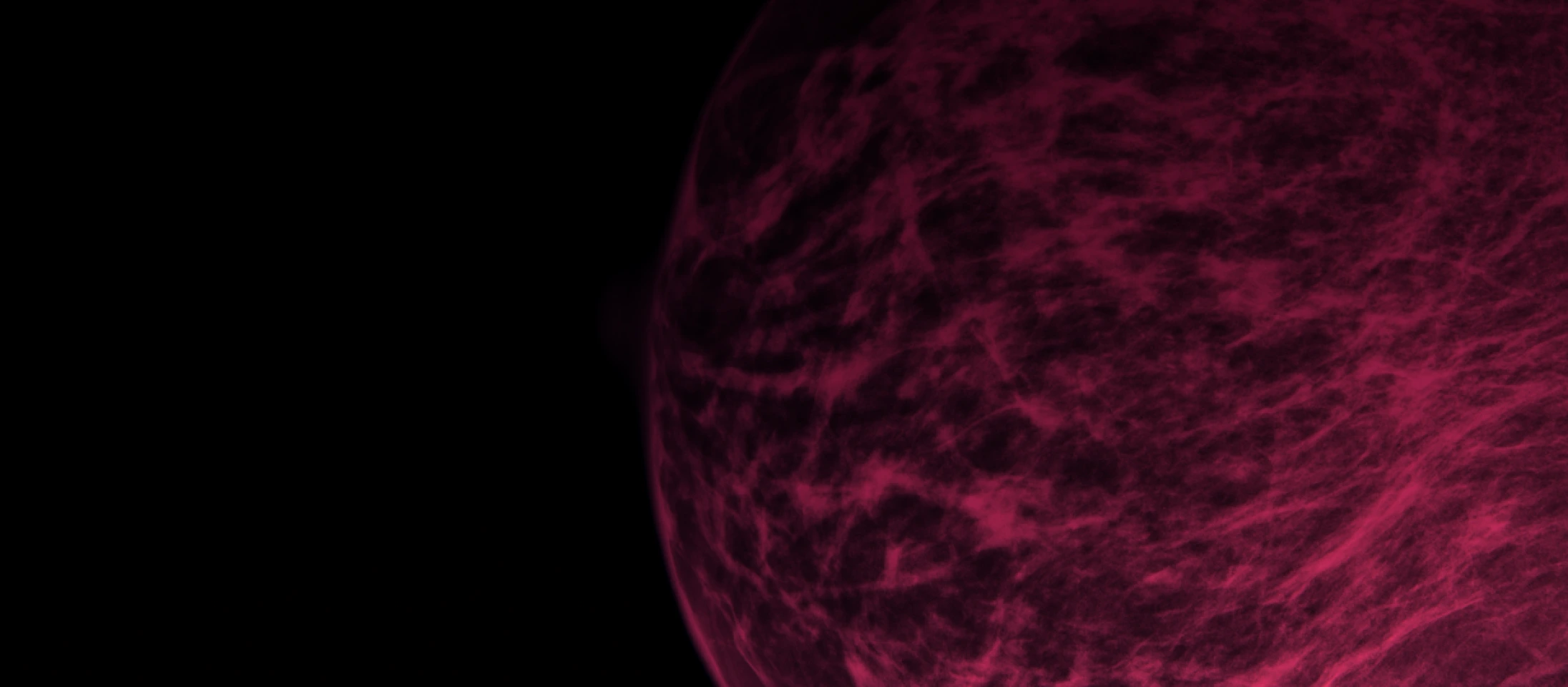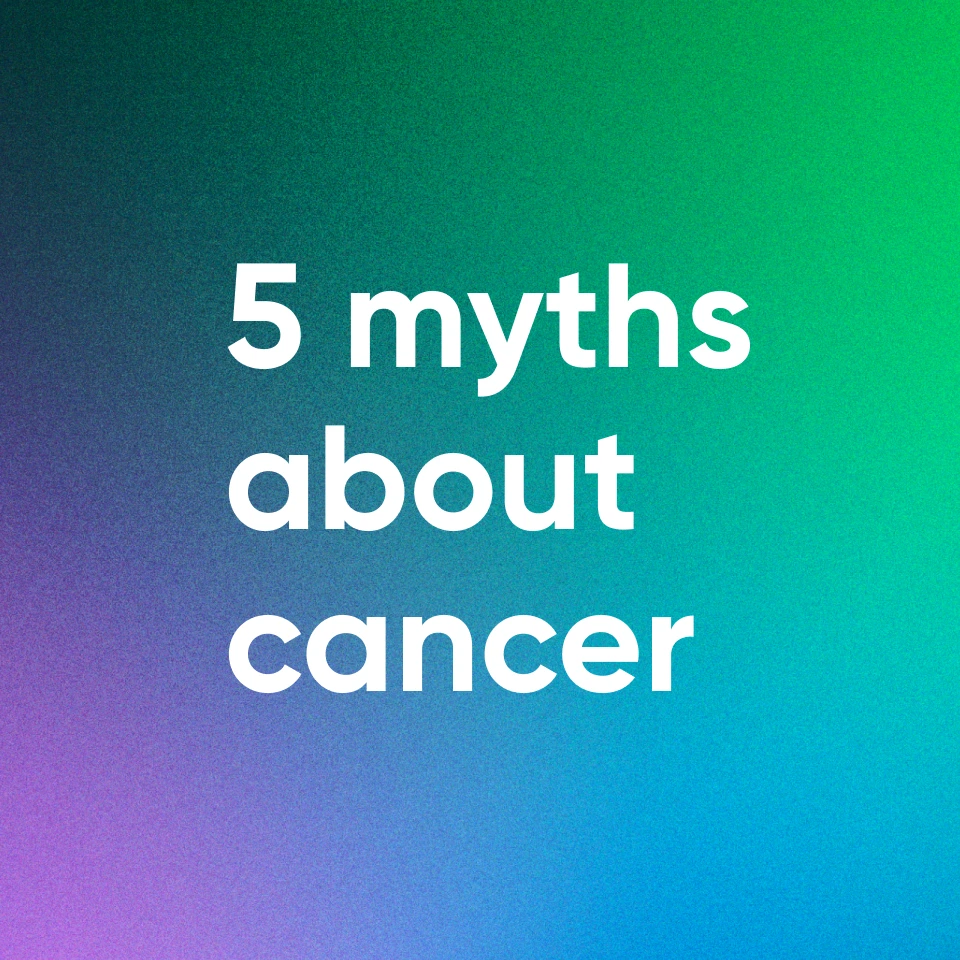October is Breast Cancer Awareness Month. And with it comes pink ribbons, educational campaigns, and a reminder to schedule an appointment for your annual mammogram. It’s also a great time to familiarize yourself with the latest breast cancer research and statistics. For instance, breast cancer is the most common cancer in women in the U.S., after skin cancer. One in 8 American women will be diagnosed with breast cancer in their lifetime. And breast cancer remains the second leading cause of cancer death in women, following lung cancer.
But there’s a critical piece of the conversation that rarely makes headlines: breast density. Almost half of women in the United States have dense breast tissue. While it may sound like just a term used to describe a woman’s breast composition, breast density has real implications for health. It raises the risk of breast cancer and can even make it harder to detect tumors on mammograms, the screening method most women rely on.
Most women don’t know they have dense breast tissue and studies have shown that many women are also unaware of what it means for their health. Here’s a closer look at what breast density is and why it matters.
Related: Why proactive screening for breast cancer is more important than ever
What to know about breast density
Our breasts are made up of different types of tissue. Fibrous or connective tissue is what holds them in place, while glandular tissue includes lobules and ducts that produce and transport milk. Then there is the fatty tissue that lies in between those layers and gives breasts their size and shape.
When we talk about breast density, we’re referring to the measure of how much fibrous and glandular tissue there is in the breast relative to fat tissue. So, if you have higher breast density, that means that your breasts hold more fibroglandular tissue than fatty tissue.
Radiologists classify breast density into four categories that describe the amount of fibroglandular tissue compared with fatty tissue:
A: Almost entirely fatty: This makes it easier for abnormalities to show up on a mammogram.
B: Scattered areas of fibroglandular density: The breasts are mostly fatty but contain scattered areas of dense fibroglandular tissue.
C: Heterogeneously dense: Many areas of fibroglandular tissue, which can make it harder to see small tumors.
D: Extremely dense: The breasts are almost entirely dense tissue. This can lower the sensitivity of mammography, making tumors harder to detect, and can increase one’s risk of breast cancer.
It’s important to know that denser breast tissue can make mammograms harder to interpret. This is because both fibrous and glandular tissue and tumors look white on a mammogram. Since it’s hard to distinguish between denser breast tissue and a tumor, a potential abnormality could be missed. Dense breasts also make a woman more prone to getting breast cancer.
Screening options for dense breasts
When it comes to breast cancer, early detection saves lives. But for women with dense breast tissue, early detection can be trickier. Since having denser breasts not only raises the risk of breast cancer, it can also make abnormalities harder to spot on a standard mammogram. Thus, additional or specialized screening methods like 3D mammography, ultrasound, or MRI can play a key role in getting a clearer, more thorough view of your breast health.
Here’s a breakdown of the current screening tools doctors use to detect breast cancer and a look at their accuracy for women with denser breasts:
Mammogram: The first line-testing:
This previously was the gold standard screening and first line-testing for breast cancer, but experts are now encouraging women to prioritize 3D mammogram over 2D if possible, due to its enhanced accuracy - more on that below. It’s the most widely used screening tool and has been shown to reduce the risk of breast cancer mortality by more than 65%. But for women with dense breasts, mammograms can be less sensitive, as more fibrous and glandular breast tissue can make small abnormalities harder to see.
If you’re unsure if you have dense breasts, a mammogram will usually note this in the results. In fact, a federal mandate now requires radiologists to inform women if they have dense breasts. It’s important not to skip mammograms, but to also know that women with dense breast tissue may sometimes be advised to undergo additional screenings, such as ultrasound or MRI, as a supplemental check. Together this can give doctors a more complete look at your breast health.
3D Mammography: A more detailed look:
Also known as breast tomosynthesis, this is an advanced form of mammography that takes multiple images of breast tissue to recreate a 3D image of the breast (compared to a standard mammogram that only takes one image). This technique allows radiologists to examine breast tissue layer by layer. A 3D mammogram can also help to improve a mammogram’s ability to detect abnormalities, especially in dense breasts. Studies have shown that 3D mammograms can increase cancer detection rates and reduce the number of false positives compared to traditional 2D mammography. While the radiation is generally considered to be low, 3D mammography does expose you to more radiation than a traditional 2D mammogram. Note that a mammogram is still the gold standard, but health experts are now encouraging women to prioritize a 3D mammogram over a 2D if possible, due to its enhanced accuracy.
Breast Ultrasound: A helpful supplement:
Ultrasound uses sound waves to create images of breast tissue. It can be used to spot tumors that may not appear on a mammogram, especially in women with dense breasts. Breast ultrasounds can show whether lumps are fluid-filled cysts, which are often benign, or solid masses, which could be cancerous or require further testing.
While ultrasounds don’t use radiation and can reveal tumors that mammograms might miss, their accuracy can depend on the skill of the person doing the ultrasound. And ultrasounds are generally used as a supplement rather than a replacement for standard mammography. For women with dense breasts, combining ultrasound with mammography can provide a more complete picture of breast health.
MRI: A detailed view:
An MRI uses a strong magnet, radio waves and a computer to produce detailed images of the breast and surrounding tissue. For women with dense breasts or those at higher risk, an MRI can provide a more comprehensive view than mammography alone, helping detect abnormalities that might otherwise be missed.
Prenuvo’s whole body MRI takes this even further. It not only measures breast density, but also provides clear, detailed anatomical images of the entire body—checking for hundreds of conditions even before symptoms appear, including cancer as early as stage 1, aneurysms, signs of inflammation in the body, brain health, musculoskeletal conditions, and more. The scan is designed to give patients actionable insights about their body, which they can use to make lifestyle tweaks to support long-term health, optimize wellness, and help identify abnormalities early.
Related: What can a whole body MRI actually detect?
Breast cancer screening tools at a glance
Mammogram (2D)
X-ray images of the breast
Best for: First-line screening
Pros: Widely available, proven to reduce mortality by 65%+
Cons: Less sensitive in dense breasts; may miss small tumors
3D Mammogram (Tomosynthesis)
Multiple X-ray images combined into a 3D view
Best for: Women with dense breasts
Pros: Layer-by-layer view improves detection; reduces false positives
Cons: Slightly higher radiation dose than 2D; not as widely available
Ultrasound
Sound waves produce breast images
Best for: Dense breast tissue, follow-up on mammogram findings
Pros: No radiation; detects tumors mammograms may miss; distinguishes cysts from solid masses
Cons: Results dependent on technician; less sensitive than MRI
MRI
Uses magnets, radio waves, and a computer for detailed images
Best for: High-risk patients, dense breasts
Pros: More sensitive; unaffected by density; can measure density
Cons: Limited availability; usually supplemental
Related: The new proactive health standards for women
Put your breast health forward
When it comes to breast cancer, early detection remains the most effective way to save lives. Knowing your breast density and understanding the full range of screening options available to you can empower you to make informed choices. Talk with your doctor about the approach that’s right for you—whether that includes mammograms, supplemental ultrasounds, or an MRI. Regardless of breast density, mammograms are still the first line of defense, often detecting cancer before it’s big enough to feel or cause symptoms. Thus, it’s important to keep up with them.
For an even more comprehensive view of your health, Prenuvo’s whole body scan measures breast density and screens for hundreds of other conditions. This gives you actionable insights that empower you to stay ahead of potential issues.
This Breast Cancer Awareness Month, take control of your breast health. Schedule a call to learn more about the benefits of a whole body scan.



.jpg)
.webp)
.webp)


